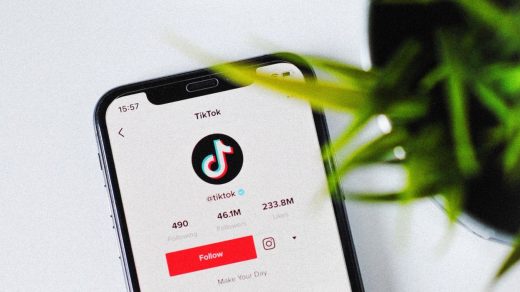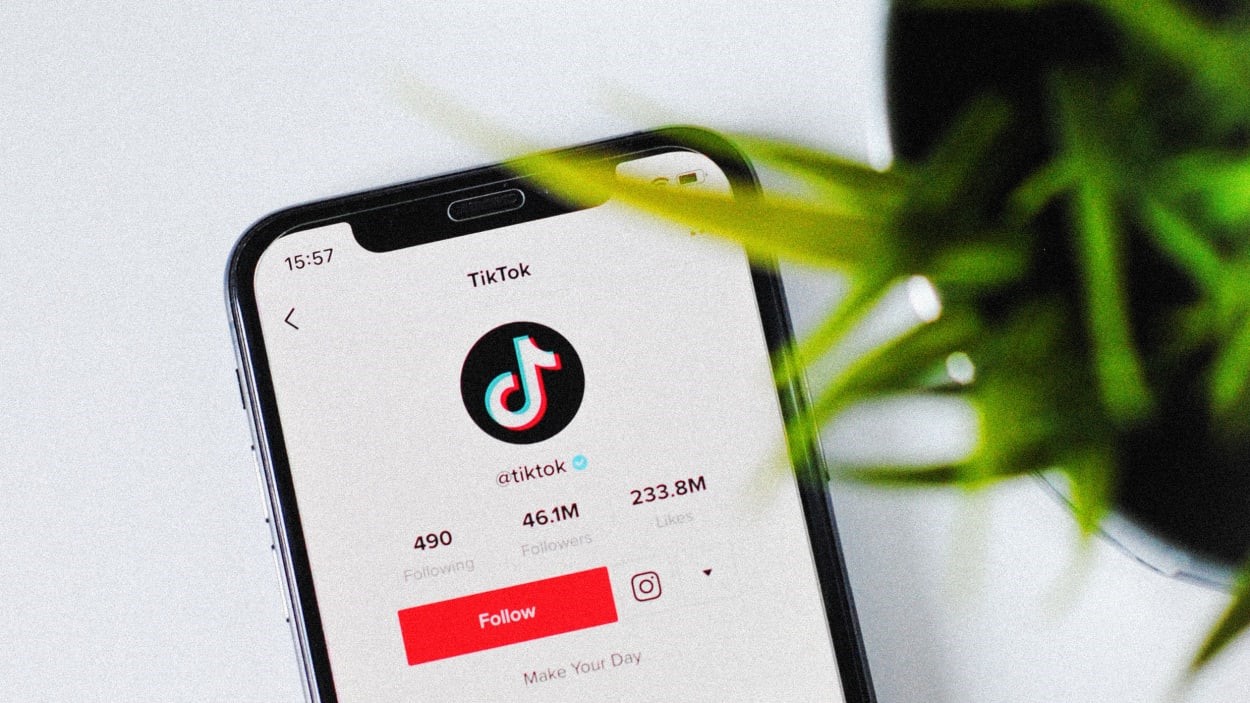TikTok is America’s next major news source
By Scott Nover
A man stares into the camera and hits me with: “Hey everyone. Genocide is bad.” I scroll down to the next video where another guy proclaims that young liberals are “rooting for a radical Islamic Nazi death cult.” I keep scrolling, eager to get back to fantasy football commentary or dog-grooming videos.
Welcome to TikTok in 2023.
TikTok isn’t just a place for the light-hearted stuff, nor is it solely viral dance crazes, sea shanties, and get-ready-with-me-videos. Increasingly, it’s where Americans say they’re getting news. That’s the takeaway from Pew Research Center’s annual study of Americans’ digital media habits, which has tracked TikTok’s meteoric growth in recent years, as well as its effects on society.
TikTok has grown rapidly since its 2018 launch, it now counts more than one billion global users, 150 million of whom are in the U.S. Fourteen percent of all Americans now get news through TikTok, according to Pew—a jump of 11 percentage points over 2020 Pew polling. For 18 to 29 year-olds, that growth is much more drastic: a change from 9% to 32%, or nearly one-third of Americans.
While TikTok’s users increasingly rely on it for news, the same cannot be said for rival platforms. X (née Twitter), Reddit, Snapchat, WhatsApp, and Facebook have all seen their users grow increasingly disengaged from news content over the past three years, per Pew. Only TikTok, Instagram, and LinkedIn—among the platforms surveyed—saw growth as a news platform in that period.
TikTok’s success is based largely on its algorithm, which personalizes each user’s feed—or For You page—based on their interests rather than what their friends and families are posting. That’s turned it into a masterful entertainment platform, rather than a traditionally successful social network.
That is exactly what makes TikTok a tricky place for news.
On TikTok, there’s lots of news discussion, but not a lot of straight news delivery. Lately, my feed has been chock full of impassioned commentary about the bloody war between Israel and Hamas, but I don’t regularly see TV news-style broadcasting on the app.
There are professional journalists doing great work on TikTok, explaining their work in a conversational way that might break through on the platform, but it’s not very often the TikTok algorithm pushes those videos to me organically—even though I’ve chosen to follow them. (If there’s any journalist I see frequently on my feed it’s New York Times columnist Jamelle Bouie, who is a master not only of the written word but of providing deep explanation and context in his videos.)
Colten Meisner, a doctoral candidate at Cornell University studying digital media, says that news-related videos are often produced by “synthesizing news produced elsewhere, editorially commenting on some aspect of the current news, or advertising reporting being published elsewhere.” That’s reflected in the videos I see: Outraged commentary tends to reach my feed while well-measured explanations of news events consistently fail to do so.
TikTok is a less-than-ideal place to get news, but its critics frequently fail to understand why.
Some of that is understably complicated by TikTok’s public image. There’s public consternation about the murky relationship between TikTok parent company ByteDance and the Chinese government, which led former president Donald Trump to try implementing a ban on the app (and indeed the app is forbidden on many government devices). While Trump failed and an ongoing investigation by Joe Biden’s administration into whether TikTok is a national security threat hasn’t yet amounted to anything, TikTok remains a thorn in the side of U.S. lawmakers and the object of intense scrutiny by China-skeptics. Some of that is warranted: ByteDance reportedly spied on journalists covering the company and censors user-generated videos that would enrage Beijing.
But some of it is a fundamental misunderstanding of how TikTok actually works.
Last week, American media was aghast that some young users on TikTok discovered a letter allegedly penned by the former al-Qaeda leader Osama bin Laden, and those users were largely sympathetic with its message. Somehow ignoring long passages of abject anti-Semitiism, homophobia, and Islamic fundamentalism, these TikTokers seized upon what they felt was a poignant critique of American foreign policy.
The incident sparked widespread outrage and garnered breathless media coverage rightly condemning these ignorant videos. But the numbers didn’t really bear out: Before the media caught on, only a few hundred videos were made discussing the letter, and surely far fewer expressing sympathy with it. CNN reported the videos garnered a combined 14 million views in total—a paltry sum considering TikTok’s massive reach and engine. The letter only went viral, so to say, after The Guardian removed it from its website, Twitter users began posting about it, and TV networks gave it airtime. As I wrote in Slate, the outrage was what went viral, not the original videos.
There are a few lessons here on how to better understand TikTok.
First, TikTok is a machine for viral content. For example, a single popular video on TikTok could have 20 million views even if the account only has a few hundred followers. “TikTok is much more about content than it is about individual creators,” says Jessica Maddox, an assistant professor at the University of Alabama, who researches social media and internet culture. That has ramifications for how we get news on the platform. “When the content is related to the thing we’re seeking information about, we’ll keep seeking information about it even if the source credibility isn’t there per se.”
Second, there’s no monoculture on TikTok. When user @doggface208 recorded himself skateboarding, drinking cranberry juice straight from the bottle, and jamming to Fleetwood Mac’s Dreams, it was perhaps the closest thing to transcendence on the app. Not only have 92 million people viewed the video on the platform, but it was used in a TikTok commercial and broke through to mainstream popularity on other platforms. Those moments are few and far between—and I can’t say I’ve seen many @doggface208 videos since, despite him having 7.6 million followers.
Yes, TikTok produces lots of stars like Charlie D’Amelio and Addison Rae Easterling. But the algorithm works in peculiar ways—despite D’Amelio having 151 million followers, for example, TikTok has never served me one of her videos. That is largely unheard of elsewhere: It’s like never chancing upon a MrBeast video on YouTube or an Elon Musk post on X. I’ve never seen a sea shanty video and I never heard any discussion of the Roman Empire either.
The bin Laden videos were so far from “trending” on TikTok because people fail to understand proportionality, the way that videos reach people, and that there’s no video or trend that everyone has seen.
TikTok isn’t really built for news; it’s built for entertainment. And sometimes news isn’t entertaining—or in a style that lends itself neatly to the platform’s mold.
More Americans say they’re getting their news from TikTok, and surely that’s true. But TikTok is a strange place to deliver and consume news. And to diagnose what that means for Americans getting their news on TikTok would ignore the reality that TikTok, more than any platform, is a mirror unto ourselves, where we largely see what we’re interested in and, in turn, we’re largely spared from what we’re not. And that’s the real horror here: We’re being funneled deeper and deeper into our own news cocoons.
(26)



